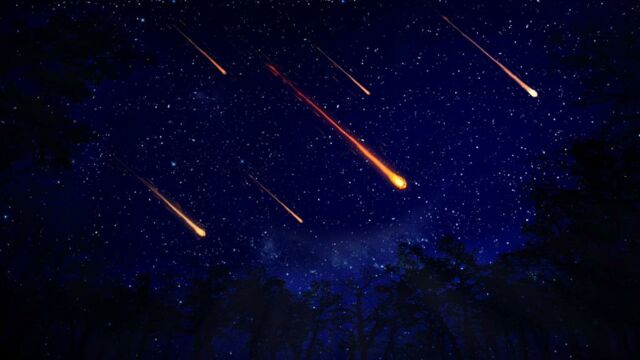Here's everything you need to know about tonight's meteor shower, 1 September

The Aurigid meteor shower is going to peak very soon on 1 September. So, if star gazing at night is your thing, here are all the details you need to know.
Meteor showers are not just a fascinating astronomical event to behold, but they are also arguably, the best free intergalactic show one can have. There is nothing akin to the feeling of waking up in the middle of night to watch the skies aflame with a thousand shooting stars.
Discover our latest podcast
August was a particularly eventful month withPerseids and Kappa Cygnids meteor showers and of course theSturgeon supermoon.
More under this adMore under this adBut it's not over yet...
For all the sky gazers out there, here is some exiting news. According to In The Sky, the period of activity for Aurigid meteor shower is between 28 August- 5 September with its peak culminating on 1 September, which means, we are going to be treated to some pretty shooting stars on that night.
The Aurigid meteor shower
The Aurigid meteor shower is due to the constellation Auriga. According to Inverse, it has been estimated that there should be 6 to 12 meteors per hour under ideal viewing conditions on 1st September.
More under this adMore under this adThe report also states that best way to not miss this grand show is by using a mobile star app like Stellarium, in case you aren't confident of your ability to spot the Auriga constellation. If you are already an amateur astronomer, look for the constellation Auriga or for Capella, the sixth brightest star in the night sky and the brightest star in the constellation Auriga.

How and when to watch the meteor shower
According to In The Sky, the shower would not be visible before 22:25 each night and will then remain active until dawn around 06:30. The best views of meteors should be in the hours right before dawn.
Inverse states that the celestial co-ordinates of the meteor's radiant point is at a right ascension of about 06:06 and a declination of about 39 degrees
More under this adMore under this adAs per Constellation Guide, Auriga translated to ‘charioteer’ in Latin, and it was first catalogued by Greek astronomer Ptolemy. Auriga is in the northern hemisphere and it is the 21st biggest constellation in the night sky.
Read more:
⋙ Dying star’s powerful explosion captured by new supercomputer
⋙ Astronomy: Beginner's guide to get started
⋙ Nasa's James Webb Telescope: Stunning images from the world's most powerful space telescope